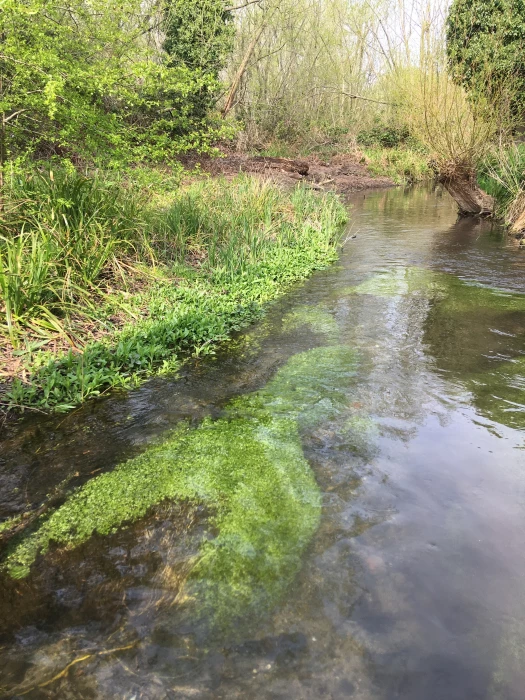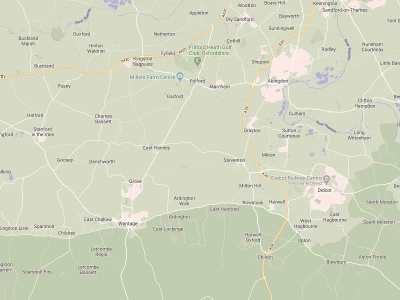Letcombe Brook
Letcombe Brook
By Mark Bradfield
The track can be heard here: Letcombe Brook
More information about the Letcombe Brook Project can be found here: Letcombe Brook
The text is as follows:
Hi, I'm Mark, the Project Officer for the Letcombe Brook project, and I'd like to tell you a bit about the brook and why it's so special.
Letcombe Brook is a chalk stream, a globally rare habitat with 85% of them being found in the UK. You could say they're rarer than a rainforest. The brook emerges from the chalk aquifer at Letcombe Bassett and flows down through Letcombe Regis, Wantage, Grove and onto East Hanney before it merges with the Childrey Brook and on into the river Ock and Thames.
Chalk streams are a naturally rich habitat. They support many rare species of plant and animal, but also have been a very important resource for our use over many years. Letcombe Brook was probably one of the main reasons for the establishment of the original Wantage settlement as it would have been an important source of fresh water.
In the past, the brook also supported many important industries, such as tanneries and mills. In 1086, the brook was recorded as having 10 mills along its length, and the Brooks about 12 kilometres long. One of the mills was here at Lock's Lane, immediately above the ford.
The brook supplied drinking water until as recently as April 2020, when a large Thames Water project brought this to a halt, with drinking water now being piped across from the River Thames. Water abstraction is a major issue for many chalk streams with over abstraction, leading to habitat loss and damage. The brook flows through or alongside many of Wantage's community green spaces and provides a very important wildlife corridor for many species.
It should also play an important role in the foundation of Oxford's nature recovery network, which is being developed at this time. The water vole, Britain's fastest declining mammal, is doing well on the Letcombe Brook. Otters are also present and occasionally glimpsed, even in the centre of Wantage near the mill, downstream at Mill Street, where they have to leave the river to pass between the two buildings before getting back into the river.
Brown trout do well in its clear waters, and stickleback and bullhead are also present along with stone loach, roach and minnows. Kingfisher can be glimpsed hurtling along the river, even in the centre of Wantage, and nest on steep sections of bank up at Letcombe and downstream at Grove and East Hanney. A recent addition is the little egret that often frequent the nature reserve upstream at Letcombe Valley Community Nature Reserve.
Ducks used to be present at such numbers that they caused bank erosion, attracted rats and became diseased due to poor nutrition and the unnaturally high population living in a small water course. The public were encouraged not to feed the ducks and numbers have now returned to a healthy natural level, and the river suffers less from erosion and litter. Look out for gray wagtails, moorhen and the many warblers that nest in the brook corridor.
In the evening, the brook corridor becomes an important feeding area for bats with common and soprano pipistrelle and Daubenton's bats present. The area between the Wessex Mill and Betjeman Park is a good stretch to watch for them after dusk. Willow Walk Nature Reserve is also a good place to observe bat activity.
Many sections of the brook show the scars of our endeavours to harness or control the river, or put it to our use, such as the mills, sections of artificial bank, or the lakes created upstream at Letcombe particularly. Modifying the river often prevents it from functioning naturally and can lead to increased flood risk or cause unseen consequences for the wildlife using it. The route river is now disconnected from its floodplain and is unable to flood at high flows without causing damage to people's homes. In the summer of 2007, serious flooding affected Lecombe Regis, Wantage, Grove and East Hanney.
Problems are compounded by road bridges, mills and utility pipes crossing the river and by building homes on what was once floodplain. Fish are prevented from moving upstream by the many obstructions to their passage, and the Letcombe Brook Project are working in partnership with the Environment Agency to remove as many obstructions as possible.
Many volunteers help look after the brook by collecting, litter monitoring for pollution, and carrying out habitat management work to ensure the precious fresh water habitat is not crowded out by brambles or lost due to heavy shading by bankside trees. Working parties are led by the project team and take place each month all year round. Bankside willows are pollarded to prolong their life and reduce shade.
Brambles are so important for wildlife, but can grow completely over a small river outcompeting the more delicate water plants that support lots of the more specialist aquatic wildlife. Healthier sections of the brook support bright green patches of starwort and water-crowfoot that provide food and protection for fish and their invertebrate feed.
The banks support colourful yellow flag, purple loosestrife and water mint and watercress is common, once harvested and sold at Covent Garden in London. The humble water vole depends on the riverside plants for shelter and feed. If you stand quietly along a lushly vegetated stretch of the brook, you may catch a glimpse of one, but they are shy and easily disturbed. It's great to know they continue to do well in the Letcombe Brook – a sign the river can still support such rare wildlife despite the pressures it faces from pollution and overdevelopment.
If you would like to learn more about the brook or the Letcombe Brook project, please go to letcombebrook.org.uk, or consider joining our Facebook group, Letcombe Brook Project. Four Letcombe Brook discovery trail leaflets are available from the excellent Vale and Downland Museum in Wantage. If you'd like to discover more of the Brook for yourselves.
Thank you, and I hope you enjoy your time along the banks of the wonderful Letcombe Brook.


